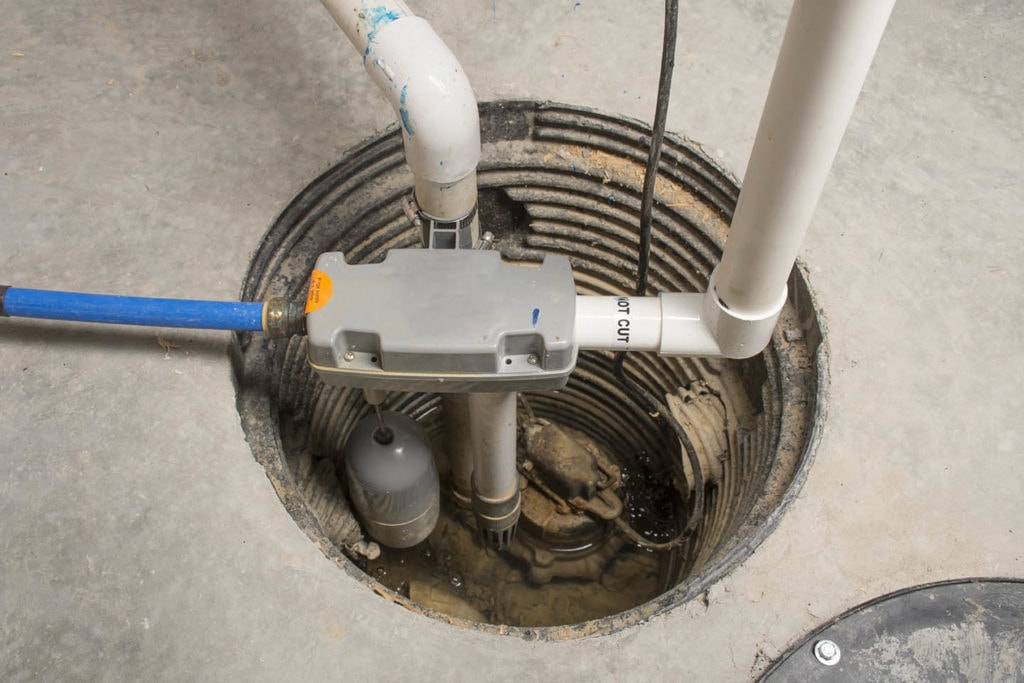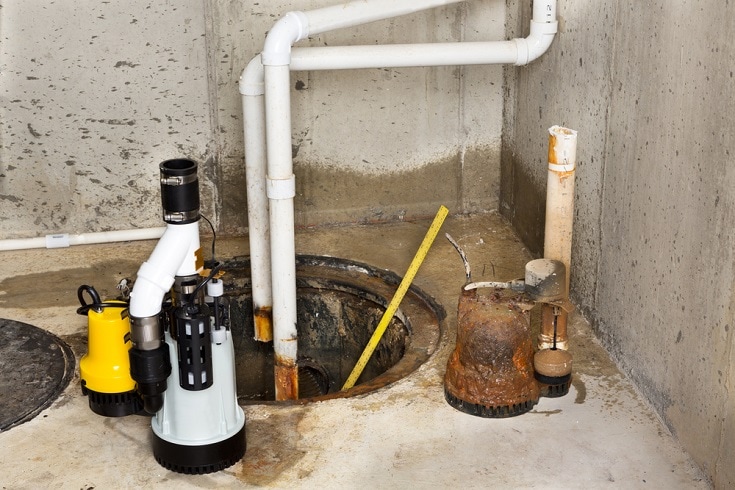How Long Does a Sump Pump Last on Average? – Complete Guide
-
Pete Ortiz
- Last updated:

A sump pump is basically an essential household appliance, especially if you live somewhere where it rains often. If you’re new to sump pumps, you might be wondering how they work, what problems to watch out for, and how long you can expect yours to last.
A sump pump lasts anywhere between 7 to 10 years, with proper care and maintenance. We will explain how to care for it and what to look for when the sump pump has problems. No doubt your sump pump will continue to work in prime condition for years if you follow our advice!
 How Sump Pumps Work
How Sump Pumps Work
Before going any further, it might be helpful to know the basics of how a sump pump works.
Sump pumps are devices installed in basements to prevent home flooding. They run off of your home’s electricity. When it rains, water saturates the soil around the foundation of your home. If it rains enough, water will start to collect and empty into the sump basin that your sump pump sits in. Drains from right outside your home’s foundation help the water drain into this basin.
Once the water level in the sump basin gets full enough, the float switch on the sump pump will engage and the pump will begin removing water from the basin. The water then travels through a tube that usually leads out into your yard, far away from the house.
As water is pumped out of the sump basin, the float switch will fall back into its usual position and turn off the sump pump.
6 Common Signs Your Sump Pump System Is Not Working
So, you’ve got your brand-new sump pump, and you know generally how it works. Now, how do you maintain it, and how often should you check it? Keep an eye on it, give it a thorough look over a few times a year and test it by pouring a bucket of water into the basin. We’ve provided a list of common problems you can watch out for while you run these biyearly checks.
Should you run into any of the issues listed below, and you don’t know what to do, it’s best to unplug the sump pump and contact a plumber for inspection.
1. No Water in Sump Basin

A small amount of water will always be visible in your sump pump. If you see that there is no water at the bottom, especially after a hard rainfall, this is a sign of a problem. The pipes designed to drain water toward the basin might be clogged or not installed correctly. A plumber should look through your sump pump system to check for correct installation.
2. Pump Won’t Engage Because of Clogs

So the sump basin is filling, but the water is not going out. This could be due to a number of reasons:
- The pump pipes are clogged with dirt or debris from the sump basin
- The pump has accumulated rust and is clogging the unit
There are two things you can do to prevent clogs from happening. One way is to make sure your basin has a cover. Some sump pump units don’t include a cover. You can purchase one and install it to keep dirt out.
The other way to prevent clogs is to keep your sump pump rust-free. When rust collects on your pump, bacteria is drawn to it. The bacteria forms a gel-like substance and gets stuck in your pipes. When you regularly check your pump, you can catch a rust problem before it causes issues.
3. Loud Noises
A normal-running sump pump will make some noise, similar to the flushing of a toilet with a motor hum. However, if you hear sounds more similar to a pair of shoes in a washing machine coming from your sump pump, this could indicate a problem with the sump pump motor.
If you’ve caught this problem within enough time, you could get lucky by just replacing the sump pump motor without having to replace the whole unit.
4. Excessive Running

While a sump pump will turn on occasionally on its own, it’s not meant to continually run over a long period of time. If this is happening, you need to address the problem immediately, as it’s usually a sign that the pump is about to fail.
The sump pump might overwork itself for these reasons:
- The float switch might be tangled or clogged. Check this part and untangle or unclog
- The check valve, which prevents water from the “out” pipe from flowing back into the basin, is broken or missing. Replace or repair this part.
- The sump pump is too low in the water table, or there’s an underground spring turning up around your house. Install the sump pump a little higher and try again.
If any of this is happening, it could be that the sump pump was not installed correctly. It might be worth getting a second plumber (one that didn’t install it to begin with) to look at it and go from there.
5. Takes Too Long to Pump

A healthy sump pump will pump water out right away, within a few seconds. Much longer than this, and it’s possible that the sump pump you purchased is not powerful enough to get the water out of the sump basin. Go over the specs of your sump pump and sump basin with a plumber and get their advice.
6. No Power

After you are certain your sump pump system is clog-free and the pump is not turning on, you can probably blame it on an electrical problem. Most sump pumps come with surge protection built in, but a cheap or old sump pump might be susceptible to damage from surges due to power outages.
It may be obvious, but make sure your pump is plugged in. Still not working? Check the breaker box to see if the breaker has been flipped. If all the electricity on your home’s end is fine, you know there’s a problem with the sump pump and it’s time to repair or replace it.
When to Replace Your Sump Pump
If you are experiencing any of the above problems, and your own solutions or a plumber’s solutions are of no avail, you will probably need to replace your sump pump. It will benefit you to do this sooner than later, as you never know when a big rainstorm might hit and destroy your basement with flooding.
Your sump pump’s manual will tell you about how long you can expect it to last. It might help if you wrote with a permanent marker the date you purchased it and the date of intended replacement. That way, you know your house has a functional and quality sump pump when natural disasters strike.
Featured Image Credit: Lost_in_the_Midwest, Shutterstock
Contents

 How Sump Pumps Work
How Sump Pumps Work